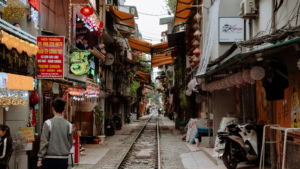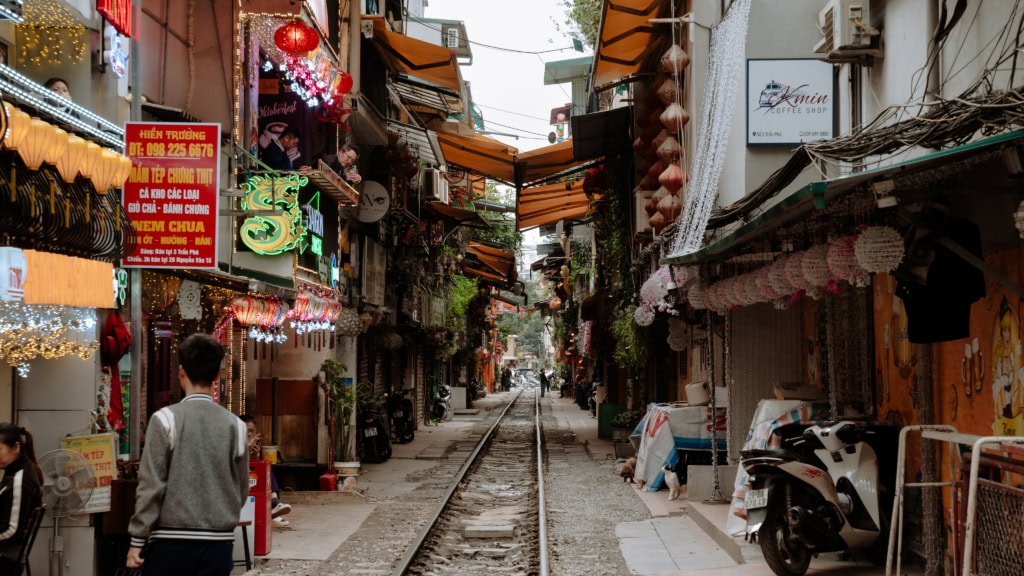Hanoi’s Train Street is a unique experience that attracts visitors from all over the world. The narrow alley, through which a train passes several times a day, offers a fascinating mix of urban life and traditional railway traffic.
Location
The famous Train Street is located in the heart of Hanoi’s Old Quarter. The most famous section is near the intersection of Trần Phú and Ly Nam De. Another section is located between Lê Duẩn and Khâm Thin streets. Both places are easily accessible and offer an authentic insight into Vietnamese city life.
History
The railway line through Train Street was built during the French colonial period in 1902. It was originally used to transport goods and passengers between North and South Vietnam. Over the years, the city grew around the tracks and residents adapted to the regular train service by organising their daily activities around the timetable.
The daily routine and train timetable
Life along the street follows its own rhythm. Residents use the space between trains for everyday activities such as cooking, playing and selling goods. When a train approaches, all items are quickly cleared away and people retreat to safe areas.
Train schedules can vary, but trains generally pass through the street at the following times:
Weekdays:
7 p.m., 7:45 p.m., 8:30 p.m., 10 p.m.
Weekends:
6 a.m., 9 a.m., 11:20 a.m., 3:20 p.m., 5:30 p.m., 6:00 p.m., 7 p.m., 7:45 p.m., 8:30 p.m., 9 p.m., 11 p.m.
Advise: It would be good to arrive approximately 30 minutes before the scheduled time, as trains can sometimes arrive earlier or later.
Safety instructions for visitors
The street is undoubtedly a fascinating place, but safety is paramount. Visitors should always keep a safe distance from the tracks and follow the instructions of the locals. It is important to remember that trains travel at high speed through the narrow alleyway and there is no room for error.
Recent developments and access restrictions
In recent years, the Vietnamese authorities have taken increased measures to improve safety along the street. During the day, access to many sections of the street is heavily restricted – official security forces prevent tourists from simply sitting on the street or walking along the tracks. Many cafes are no longer officially allowed to accept guests unless they are specifically approached and invited in by the owners.
In the evening, however, the atmosphere changes completely: the street becomes more open, many cafés suddenly have their doors wide open and visitors can sit down as before. This is when Train Street comes to life – with glowing lanterns, the sound of conversation and the unique mix of café culture and passing trains.
Hanoi’s Train Street is an impressive example of how people adapt their everyday lives to an extraordinary environment. If you want to experience the special atmosphere, be prepared for restricted access during the day or visit in the evening when the street is at its most magical. With proper planning, a visit will be an unforgettable highlight of any trip to Vietnam.














